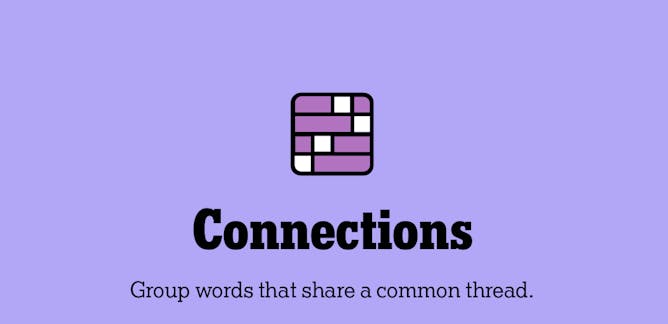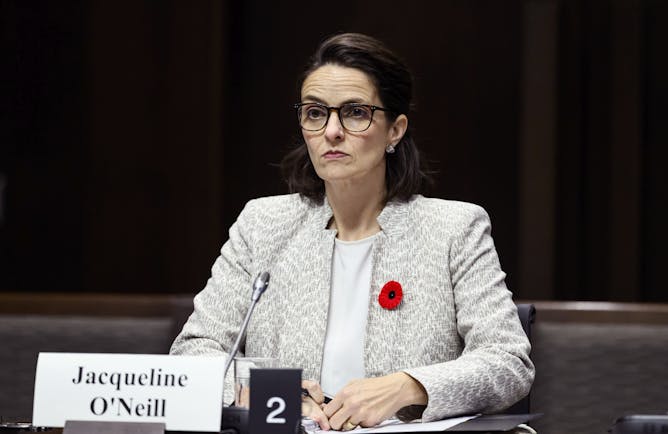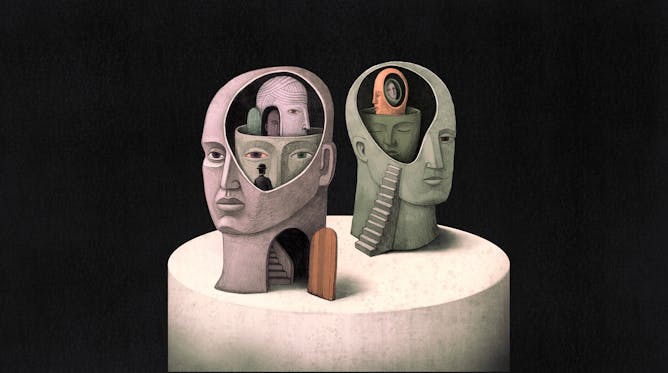|
Doing puzzles can be a welcome respite in times of turmoil, including ongoing and escalating global conflicts, and puzzle fans are currently hooked on Connections. It’s the latest word game from the New York Times that launched following the success of the newspaper’s Wordle game.
The premise of Connections is simple: from a grid of 16 words, find four groups of four that each have something in common. Sounds simple? It’s not. Why does this game spark so much delight and frustration among players?
Today in The Conversation Canada, Emiko Muraki from the University of Calgary and Penny Pexman of Western University discuss our semantic memory, how we recognize words and offer some tips that could improve your game.
Also today:
All the best,
|

Games like Connections require players to be flexible in how they access information in semantic memory in order to find new or remote associations between words.
(New York Times)
Emiko Muraki, University of Calgary; Penny Pexman, Western University
NYT’s latest game reveals how our memory works to remember words.
|

The Israeli Iron Dome air defence system launches to intercept missiles fired from Iran in central Israel on April 14, 2024, after Iran launched its first direct military attack against Israel.
(AP Photo/Tomer Neuberg)
James Devine, Mount Allison University
Despite launching an unprecedented attack on Israeli territory, Iran is still trying to avoid a larger war.
|

Jacqueline O’Neill, Canada’s ambassador for Women, Peace and Security, appears before the Senate Committee on Foreign Affairs and International Trade in November 2023.
THE CANADIAN PRESS/Justin Tang
Emma Fingler, Queen's University, Ontario
The recent release of Canada’s third National Action Plan on Women, Peace and Security highlights challenges and opportunities that go far beyond the ‘add women and stir’ approach.
|

Thinking through your own attachment history and expectations of relationships may be a great opportunity for self-reflection, but it is important to remember that attachment is only one aspect of a relationship.
(Keira Burton/Pexels)
Marissa Nivison, University of Calgary; Sheri Madigan, University of Calgary
Attachment theory is the notion that in the first year of life, the ways in which a parent and caregiver respond to a child’s needs shape a child’s expectation of relationships across their lifespan.
|

Alberta Union of Provincial Employees President Guy Smith speaks during a rally in front of the Royal Alexandra hospital, as nurses hold a Day of Action information pickets across Alberta, in Edmonton in August 2021.
THE CANADIAN PRESS/Jason Franson
Jason Foster, Athabasca University; Bob Barnetson, Athabasca University; Susan Cake, Athabasca University
The Alberta government has been involving itself with public sector bargaining in an unprecedented way compared to previous provincial governments and those in every other province and territory.
|

En comparant les rêves, on constate qu’ils se déroulent de manière très différente selon l’environnement socioculturel.
(Shutterstock)
David Samson, University of Toronto
Le rêve diffère d’une culture à l’autre, et ces différences pourraient permettre de comprendre comment et pourquoi le rêve a évolué chez l’humain et chez d’autres espèces.
|
Arts
|
-
Nomfundo Xaluva, University of Cape Town
Wrapped in Rhythm powerfully uses the poems of Lebo Mashile as lyrics.
|
|
Culture + Society
|
-
Kim Felmingham, The University of Melbourne
Social support is particularly important to help process these traumatic events and promote recovery.
|
|
Politics
|
-
Karrin Vasby Anderson, Colorado State University; Tim Bakken, United States Military Academy West Point
Donald Trump stands trial – the first former president to do so – on April 15, 2024.
|
|